#auchenorrhyncha
Explore tagged Tumblr posts
Text

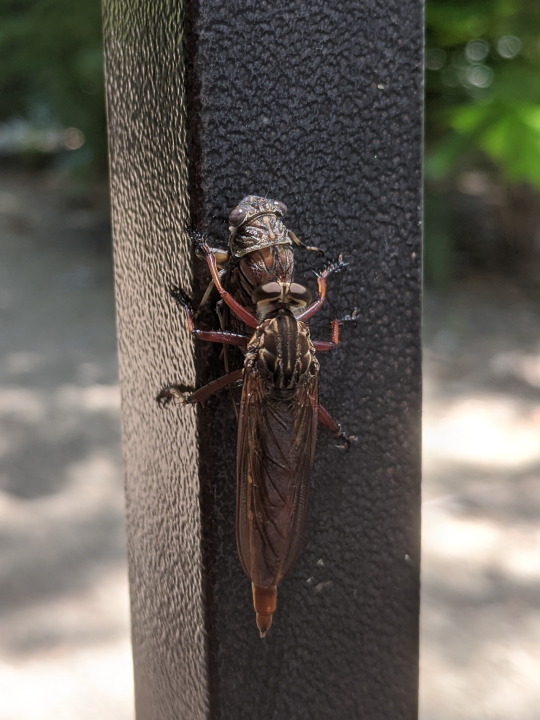
Very large robber fly attacking a cicada. I took this photo years ago, and for some reason I just forgot about it. I don't know how considering how interesting it is.
17/11/20 - QLD:WET coastal rainforest nursery Predator - Diptera: Dolopus sp. Prey - Hemiptera: Cicadoidea sp.
#Diptera#unidentified#Cicadoidea#Cicadas#Hemiptera#Auchenorrhyncha#True Hoppers#Dolopus#Asilidae#Robber Flies#Brachycera#Brachyceran Flies#flies#arthropods#arthropoda#invertblr#invertebrates#bugs#bugblr#bugs tw#bug#insects#insecta#insectblr#insects tw#entomology#insect
179 notes
·
View notes
Text










Gyponana Leafhopper - Gyponana sp.
I was hopeful when taking this leafy-green insect's picture that identification would be simple and straightforward. In practice, identification down to the specie has proven difficult, but at least the genus was achievable. Many Leafhoppers are similar in appearance, so it takes a keen eye and a close examination of the Hopper's details to be certain, up to the point of collection. In particular, the underside, and I'm not talking about the spines used for sensory purposes. I've only learned this after the fact, but nevertheless I'll be leaving these insects to hop around their plants in peace. Despite this individual's best efforts to blend into the foliage it walks on, these insects can be (initially) surprisingly easy to find. This is because they'll hop away if they sense danger.
After that hop away, if your eyes haven't tracked them they will disappear among the greenery. With a large size and the prominent cells along the wings (quite visible whether in light or shadow), one could be forgiven to mistaken them for a small leaf, akin to their distant Planthopper cousins. The stripes along the pronotum are quite pretty to look at while the Bug can remain still, but what really impresses me is the antennae. Other species showcased earlier have small antennae, up to the point of being hardly visible. Meanwhile, the antennae here are quite visible even without zooming in a photograph. They are quite long and thin, more so proportionally compared to other larger Hemipterans like Cicadas. I've thought that the antennae's thinness may be a compromise to allow for less interference during hopping, while also allowing great sensory of a surrounding environment. Perhaps comparing this individual against other finds may provide some insight.
Pictures were taken on July 7, 2024 with a Google Pixel 4.
#jonny’s insect catalogue#ontario insect#leafhopper#gyponana leafhopper#green leafhopper#gyponana#true bug#hemiptera#auchenorrhyncha#insect#hopper#july2024#2024#toronto#nature#entomology#invertebrates#arthropods#photography#animals
36 notes
·
View notes
Text

Greengrocer Cicada - Cyclochila australasiae
Bargo, NSW, Aus, 12 Oct 2023
#insects#Cyclochila australasiae#cicada#greengrocer cicada#greengrocer#green cicada#ocelli#simple eye#hemiptera#arthopoda#auchenorrhyncha#cicadidae#cyclochila#insecta#my photography#bug posting
20 notes
·
View notes
Text

#IFTTT#Flickr#macro#insect#focusstack#fieldwork#sonya6500#laowa65mmf282xultramacroapo#zerenestacker#animalia#arthropoda#hexapoda#insecta#pterygota#hemiptera#auchenorrhyncha#cicadomorpha#membracoidea#cicadellidae#cicadellinae#cicadellini#cicadella#말매미충#cicadelleverte#зелёнаяцикадка#cigarrinhaverde#ruohokaskas#オオヨコバイ#žaliojicikadėlė#bezrąbeksadowiec
14 notes
·
View notes
Text
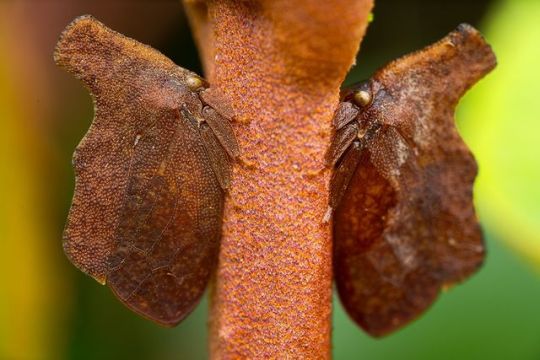
Stegaspis fronditia
#Stegaspis fronditia#treehopper#Insecta#Hemiptera#Auchenorrhyncha#Membracidae#Stegaspidinae#Stegaspis#upl
5 notes
·
View notes
Photo
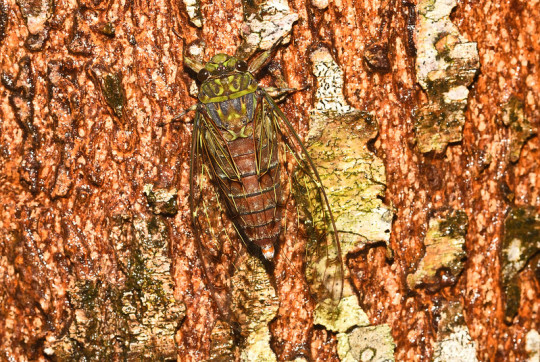
Cicada (Mata sp.) in Karnataka, India
by praveen pandian
3 notes
·
View notes
Text
A bunch of hoppers
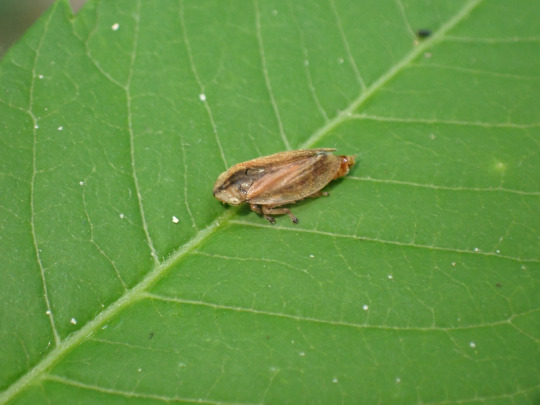



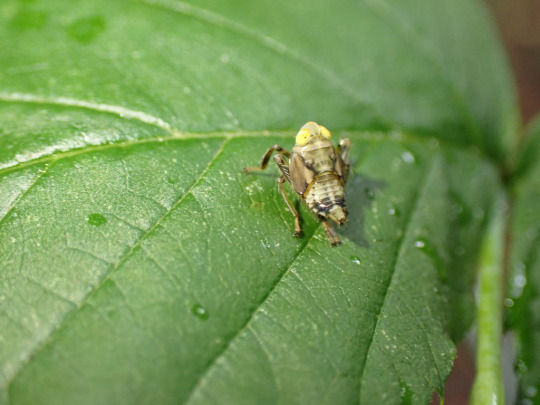
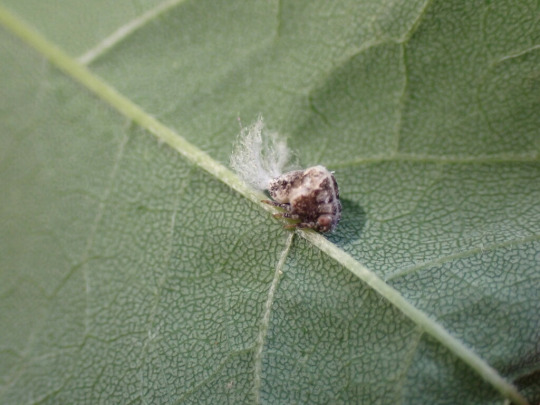
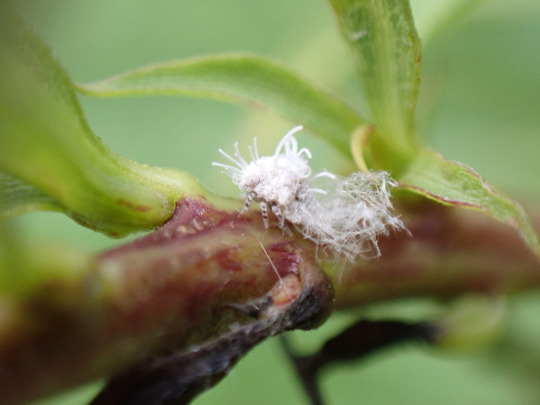

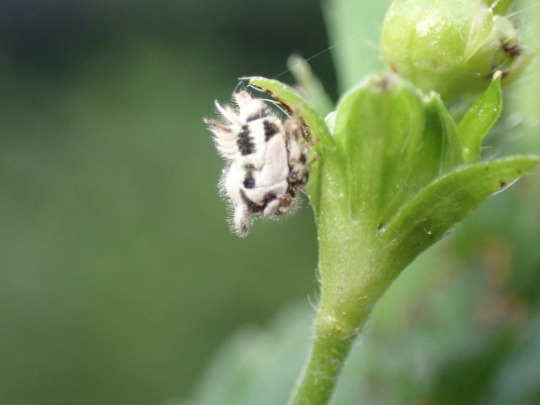
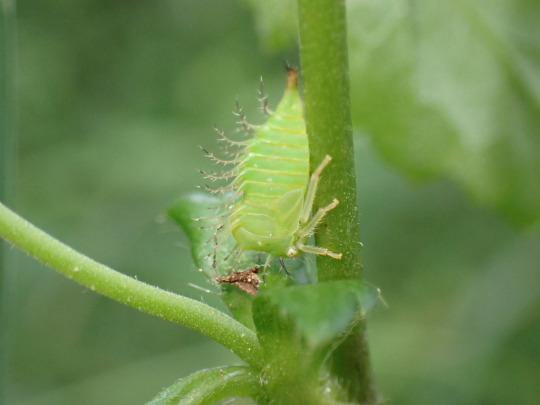

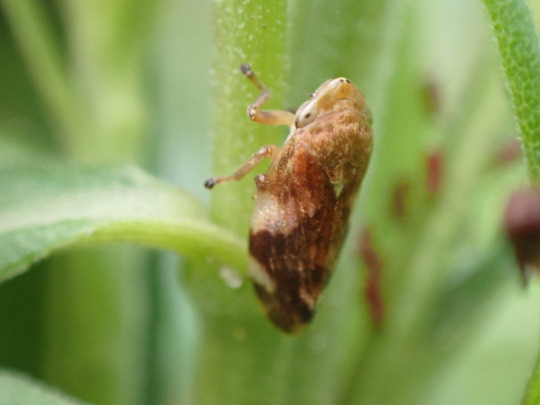

#bugs#bugblr#hemiptera#auchenorrhyncha#membracidae#cicadellidae#cercopidae#fulgoroidea#clastopteridae#arthropods#insects#mine
2 notes
·
View notes
Text
Here are some good diagrams from Essential Entomology An Order-by-Order Introduction by George C. McGavin. They're more general, being about Hemiptera (the order cicadas belong to) in general rather than just cicadas, though.



Cicadas are within Auchenorrhyncha, so the head in the bottom left is closest to theirs. Its fascinating how their mouthparts are descended from all the same things you can find on a more generalized mouth, like that of a cockroach.
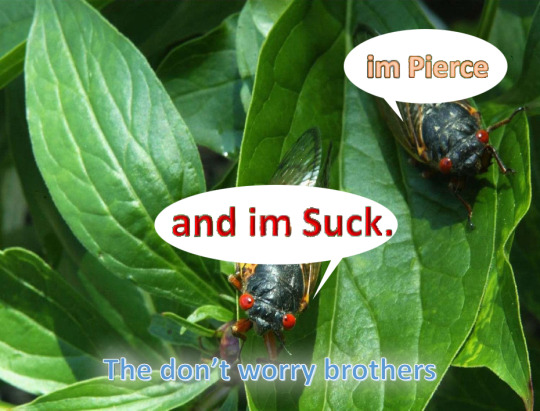

OP made this post unrebloggable but me and my bf made this meme in a fit of obsession and it had to be shared
87K notes
·
View notes
Text
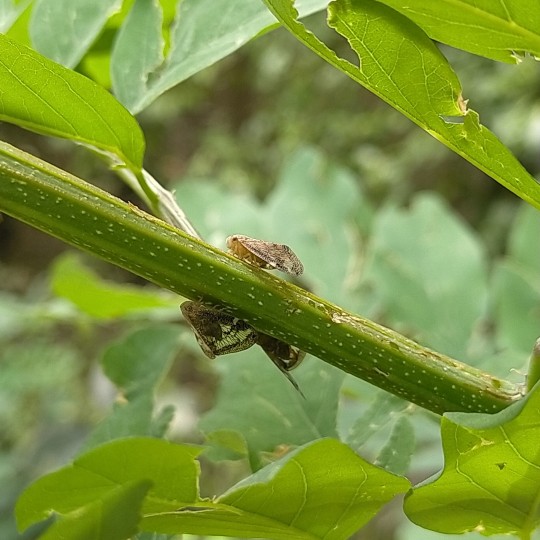
Scolypopa australis
09-FEB-2023
Melbourne, Vic
#australia#victoria#melbourne#australian natives#native fauna#insect#bug#arthropod#invertebrates#passionvine hopper#arthropoda#insecta#auchenorrhyncha#fulgoroideae#ricaniidae#scolypopa#scolypopa australis#green
0 notes
Text

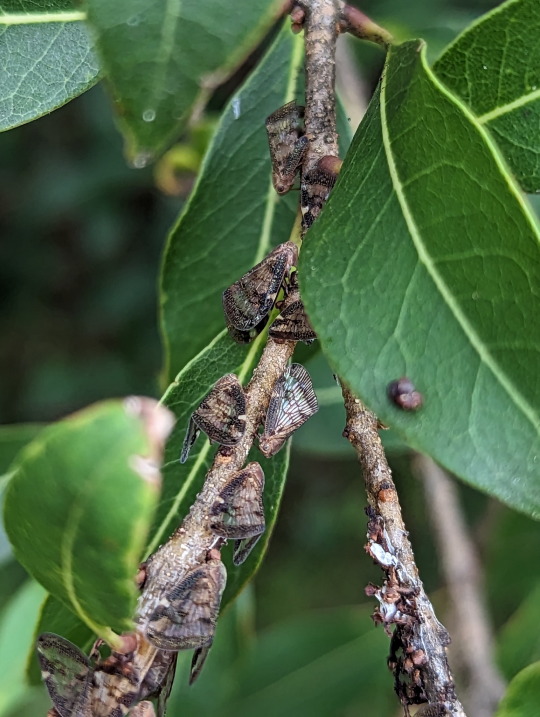
Passionvine Hopper
Scolypopa australis
24/03/23 - NSW, Dapto
#invertebrates#invertblr#Arthropods#Arthropoda#bugs tw#insects#insect#insecta#insectblr#insects tw#bugs#bugblr#bug#entomology#Passionvine Hopper#Scolypopa australis#Hemiptera#Auchenorrhyncha#True Hoppers#Fulgoromorpha#Planthoppers
145 notes
·
View notes
Text






Meadow Spittlebug - Philaenus spumarius
After developing inside a frothy blob of foam while nestled against a thriving plant, an adult Spittlebug emerges, ready to leap and fly! Normally, I find this specie with a tan-brown coloration across their whole body (as can be seen in earlier posts), but today's specimen looks drastically different in terms of color. It could even be mistaken for a different specie, hence it's important to remember that the Meadow Spittlebug's color palette is extremely variable! This individual features a mostly melanistic dorsal side with the rest of its body being a sandy brown color. It's likely decorative, but I order why such patterns arise (i.e. is it phenotypic or diet related) and if there are other benefits to this color variation. Nevertheless, there can be many decorative patterns along the insect's body in all manner of colors, including black, white, brown, grey and a brick-orange (as seen on a comprehensive illustration on Bugguide). However it is still a Meadow Spittlebug. We can see that via the presence of prominent wing veins.
While the veins are visible, I don't see any tiny spots near the tip of its head, but its possible that they aren't there given the melanistic color of this individual. There may be something directly on the face of this Hopper, but alas, my phone wasn't able to focus precisely on the little insect. If you think that's tricky to capture in a picture, try and photograph the spine(s) found on the hind tibia of this Bug. Spittlebugs are distinguished from similar insects in other ways than simply, "the nymphs make and hide in frothy spittle when growing". When they hop in the grass and among plants as they travel, their leaping can often lead to mistaking them for drab Leafhoppers. To be absolutely sure, try (your very best) to locate the prominent spikes - species can have 1 or 2 - along with a ring of spines on the hindlegs. If you find those, you've definitely found a Spittlebug, but good luck trying to observe that in the wild. If they aren't leaping away, Spittlebugs often keep their legs concealed beneath their body; it tends to widen out along the abdomen before converging to a tip (in most species). This gives the jumping legs a bit of coverage while the Bug is at rest or maintaining crypsis against a plant...or perhaps in the shadows for melanistic forms.
Pictures were taken on July 7, 2024 with a Google Pixel 4.
#jonny’s insect catalogue#ontario insect#spittlebug#meadow spittlebug#hemiptera#auchenorrhyncha#true bug#insect#toronto#july2024#2024#nature#entomology#invertebrates#arthropods#photography#animals
2 notes
·
View notes
Text
They're so cute and beautifully patterned, whimsical creatures
There was a branch loaded with oak treehopper nymphs and one lone adult climbing over them. The cutest lumps, every last one 🥹
(pardon the shakiness of the video, it was windy af today)
3/3/23. N. Florida


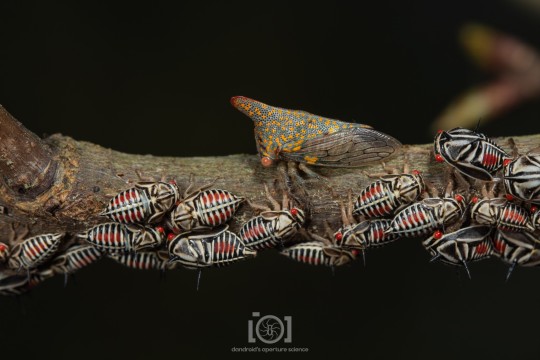
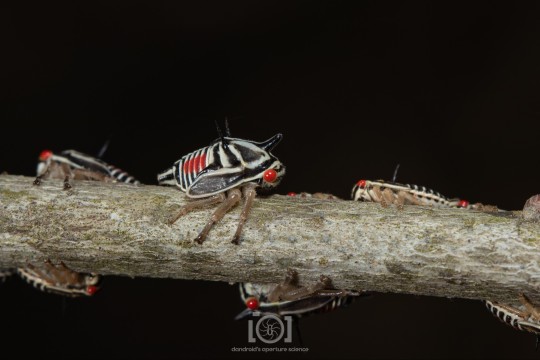

575 notes
·
View notes
Text
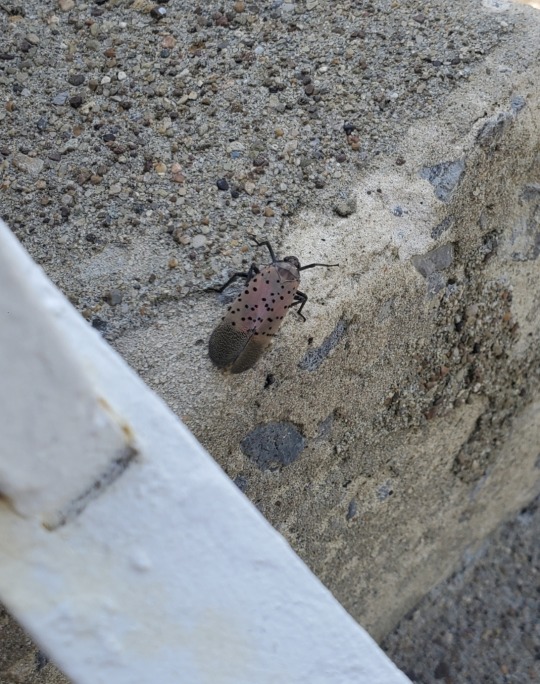
8/26/22
The dreaded lanternfly... boogeyman of PA. I've seen pictures for years but was still shocked by their vibrant orange wings.
#spotted lanternfly#Lycorma delicatula#animal#insect#insecta#hemiptera#Auchenorrhyncha#Fulgoromorpha#Fulgoridae
0 notes
Photo

Lycorma delicatula - Spotted Lanternfly nymphs
#insects #entomology #bugblr #nycbugs #spotted lanternfly #invasive #planthopper #auchenorrhyncha
14 notes
·
View notes
Text

Day 4; the Hemiptera order! Specially, I decided to draw a cicada since they're very relevant this year 💀. The Hemiptera order is known as the 'true bugs,' because while most people refer to all insects as bugs that's actually not correct! Only some insects technically classify as bugs.
The main feature of the group is the mouthparts, which are of the piercing/sucking type. The mandibles and maxillae form 2 pairs of piercing stylets and are contained in a flexible sheath derived from the labium.
Traditionally they are divided into two groups based on wing structure: the Heteroptera and Homoptera. However, now the order tends to be divided into three suborders: Sternorrhyncha, Auchenorrhyncha and Heteroptera.
The 2 groups can often be distinguished easily, as the Heteropterans have a large pronotum (plate-like structure that covers all or part of the thorax) and a relatively small mesonotum (middle of the back) and metanotum (the dorsal portion of the metathoracic integument of an insect). Whereas most Homopterans have a small pronotum and a large mesonotum – and slightly smaller metanotum.
Note: The metathorax is the segment that bears the hindwings in most winged insects
You can also tell through the wings. Further to this, the wings of the Heteropterans are usually held flat over the body and the forewings (which are hard and stiff, almost like beetle elytra) have the end part soft and membranous. However, the Homoptera usually hold their wings over the body like a tent and the forewings are entirely sclerotised, with no membraneuos tip.
Note: I learned like 6 new words making this 😭. Also the cicada is saying they only listen to UNDERGROUND DRONE bands get itttttt??
#cicada#hemiptera#music#drone music#underground music#hexapoda#arthropods#drawing#markers#traditional art#artwork#entomology art#entomology#art
0 notes
Photo
I always have to look this one up because it's Pyrops candelaria but it's so the QUINTESSENTIAL lanternfly bug, it always seems to be that it's name should be Fulgora laternaria. But that's another, cooler bug (I know, it seems impossible):




Photo credits:
1) Alan Rockefeller on iNaturalist Canada
2) Eerika Shulz on Flickr
3) Arthur Chapman on Flickr
4) Gernot Kunz on Hemiptera Database.org
I just have never recovered from the existence of this bug. The only one I got to see in real life was a specimen one of my professors brought to my general exam and I had to identify it with 20 questions sight unseen. Felt like a wizard.

Name: Tengu Tony
Skill: Winds of Misdirection
Quote: “where am i“
(Image by Davis Kwan on Flickr)
#none of which is meant to undermine Tengu Tony or his diagnosis#it tickles me that it's such a superstar bug and i can't keep its name in my head#and keep thinking it's this other related but totally different bug#God i love Auchenorrhyncha
94 notes
·
View notes